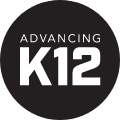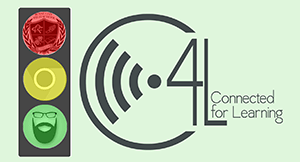
Student data is like the words on a page of a book: its black and white text might not look like much at first glance, but it tells a unique and intricate story.
Conveying that story, in vivid color, to stakeholders is an important job with the potential to improve student learning. It starts with ensuring data is accessible to all stakeholders and taking the time to examine the data from all angles.
The importance of student data
Much more than test scores, student data is multi-faceted and includes academic information, demographic information, student actions (like behavior and attendance), and more. It takes bringing all these types of data together to get a clear picture of student learning.Data is one of the most powerful and useful tools we have at our disposal to help students get the most from their education. It’s not just a snapshot of what was or is; it's also a snapshot of what can be, if you know how to interpret and act on it.
The Data Quality Campaign explains how education will look when data is working for all students:
- Students will know their strengths and where they need to grow, and they’ll be better equipped to shape their education journeys.
- Parents will know what actions to take to help their child toward success.
- Teachers will know where their students are succeeding and struggling, better empowering them to better help kids grow.
- School leaders will know what is and isn’t working in their schools; they’ll be able to make timely decisions and make sure resources support great teaching and improve student learning.
- Afterschool partners will know what’s happening with the kids before 3:00 p.m. and help families and communities create more opportunities for students to succeed.
As you can see, comprehensive student data unlocks the door to greater opportunity. But having this data at your fingertips isn’t enough—you also must examine the data in the right way.
The importance of different views
In order to see this idealistic vision become reality, district leaders must commit to analyzing data from all angles.Think of it this way: If you saw a peacock for the first time from behind, it might not look like much. You’d see a patterned fan, but dark and muted. It wouldn’t be until you walked around to the front that you’d realize it’s a living bird—in beautiful, vibrant color.
Student data is the same way; you don’t know what you’ve got until you consider all sides. Looking at data in different ways means educators with different training and backgrounds will pick out different highlights to focus on. For instance, a special education teacher will see different patterns than a district curriculum and instruction admin.
When you combine multiple data visuals with multiple areas of expertise, you gain full access to the story of student learning and further insight to guide growth. And isn’t that ultimately what the data is all about?
How to better visualize data
Start by breaking out of columns and rows. Ordinary spreadsheets are great for those who have ample experience with them, but for those who don’t, the black and white jumble of numbers can be pretty overwhelming. In order to get the best analysis and feedback from all your stakeholders, the data must be fully accessible.This is where your administrative software system comes in clutch. Ideally, your software will allow for pulling reports, data mining custom reports, and then exporting them into a companion system that allows you to identify trends. (If you’re looking for a companion system to transform your data but you’re not sure where to start, check out this list of the top nine visualization tools of 2021.) Some student information systems can even display data in the form of charts and graphs right on your dashboard so you don’t have to create all visualizations yourself.
A story well told
As they say, knowledge is power. By better grasping where students stand through comprehensive, accessible data, district leaders have the power to improve the education experience for all students.Follow-up resource: How Ed-Fi Standards Simplify Student Data Management
How do school leaders keep track of minute student data points in their district—then turn those numbers into action to improve instruction? Find out here!WHAT'S NEXT FOR YOUR EDTECH? The right combo of tools & support retains staff and serves students better. We'd love to help. Visit skyward.com/get-started to learn more.

|
Advancing K12 Staff Edtech Thought Leaders |




